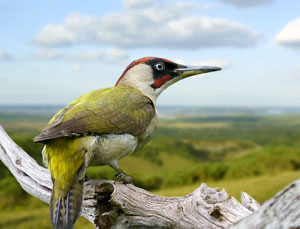The British Jay: A Colourful Marvel of Woodlands and Gardens
The British Jay (Garrulus glandarius), is an energetic and charismatic avian wonder. This crow family member captivates the hearts of birdwatchers and environment lovers alike with its stunning plumage, loud calls, and unusual behaviour. We’ll dig into the fascinating world of the British Jay in this post, learning about its traits, habitat, behaviour, and current conservation status.

Appearance and Plumage:
The blend of earthy tones and vibrant colours on the Jay make for a beautiful visual spectacle. A variety of vivid colours, including electric blue wing feathers, a recognisable black “moustache,” and white markings are applied on its soft, pinkish-buff body. The jay’s captivating wing pattern, which is characterised by an eye-catching contrast between the blue and black feathers, is revealed when it is in flight.
Habitat and Distribution:
The British Jay are most often found in the woodlands, forests, and gardens of the United Kingdom. Although it is mostly prevalent in England and Wales, it is also present in some areas of Scotland and Ireland. In mixed forests, where they may take advantage of the plentiful supplies given by trees, shrubs, and the forest floor, jays are very common.
Behaviour and Diet:
Both the behaviour and the appearance of the British Jay are fascinating. Jays exhibit a mix of caution and fearlessness, frequently observed darting through bushes and trees with a recognisable hopping pace. Jays are skilled foragers and are known to store acorns and other nuts for later consumption. They are noted for their intelligence. This caching behaviour is essential for the germination and spread of seeds, which benefits the health of woodlands.
Bird Song and Communication:
The vocalisations of the jay are an appealing fusion of musical calls, impersonations, and screeches. It can be challenging to identify their sounds from those of other woodland occupants because of their capacity to mimic other bird species. Their noisy, scratchy sounds frequently act as a first line of defence, warning other birds of prospective predators.
Breeding and Nesting:
British Jays start constructing their elaborate nests in the spring. These nests are made of twigs, leaves, and other plant materials and are expertly concealed by the surrounding vegetation. Jays are monogamous during the breeding season, and both parents help to care for the young fledglings and incubate the eggs.
Conservation and Future Outlook:
The Jay is not regarded as a species of conservation concern, although the condition of its woodland habitats has a significant impact on its wellbeing. Diverse forests must be protected and restored if we are to ensure the long-term survival of these fascinating birds. Jays must also be able to live in harmony with urban development and natural areas in order to survive.
The Jay’s Role in the UK’s Natural Ecosystem:
Beyond being attractive in terms of appearance and behaviour, Jays are essential to the ecosystems they live in. They are crucial agents for the health and regeneration of forests because their caching behaviour aids in seed distribution and woodland restoration.
In conclusion, the Jay serves as evidence of the extraordinary complexity and beauty of the natural world. It is a beloved and essential component of the British countryside because of its spectacular appearance, resourceful behaviour, and significant ecological contributions. We can ensure that future generations will be able to experience the wonder of seeing the British Jay in its natural habitat by continuing to value and protect the woodlands that are home to these magnificent creatures.




